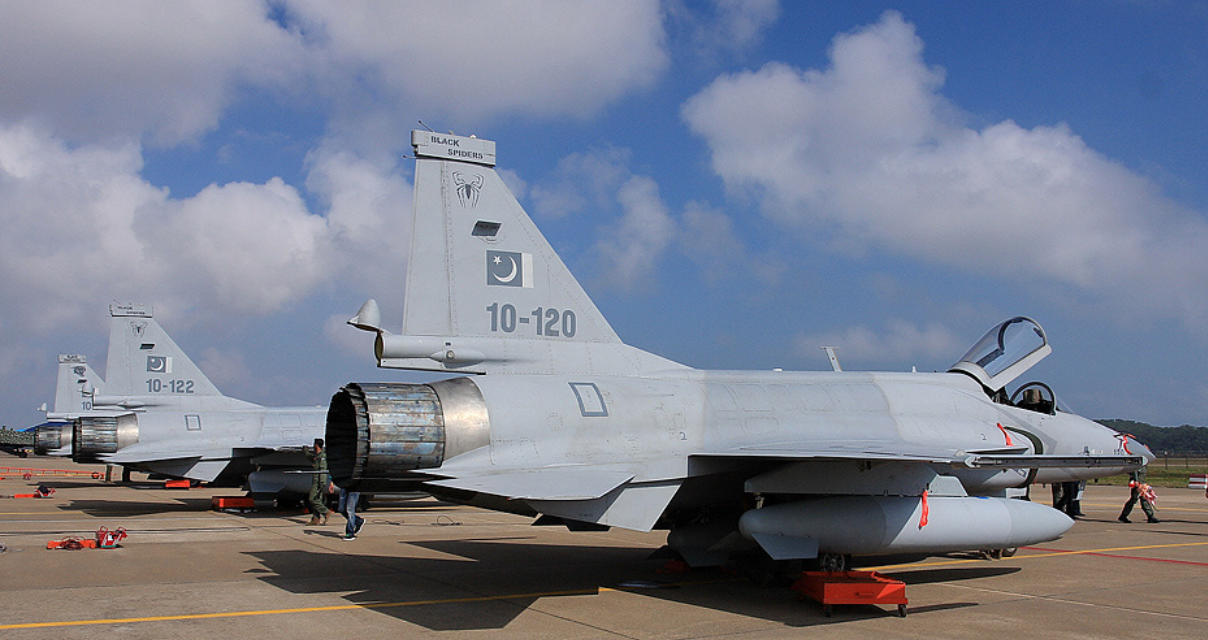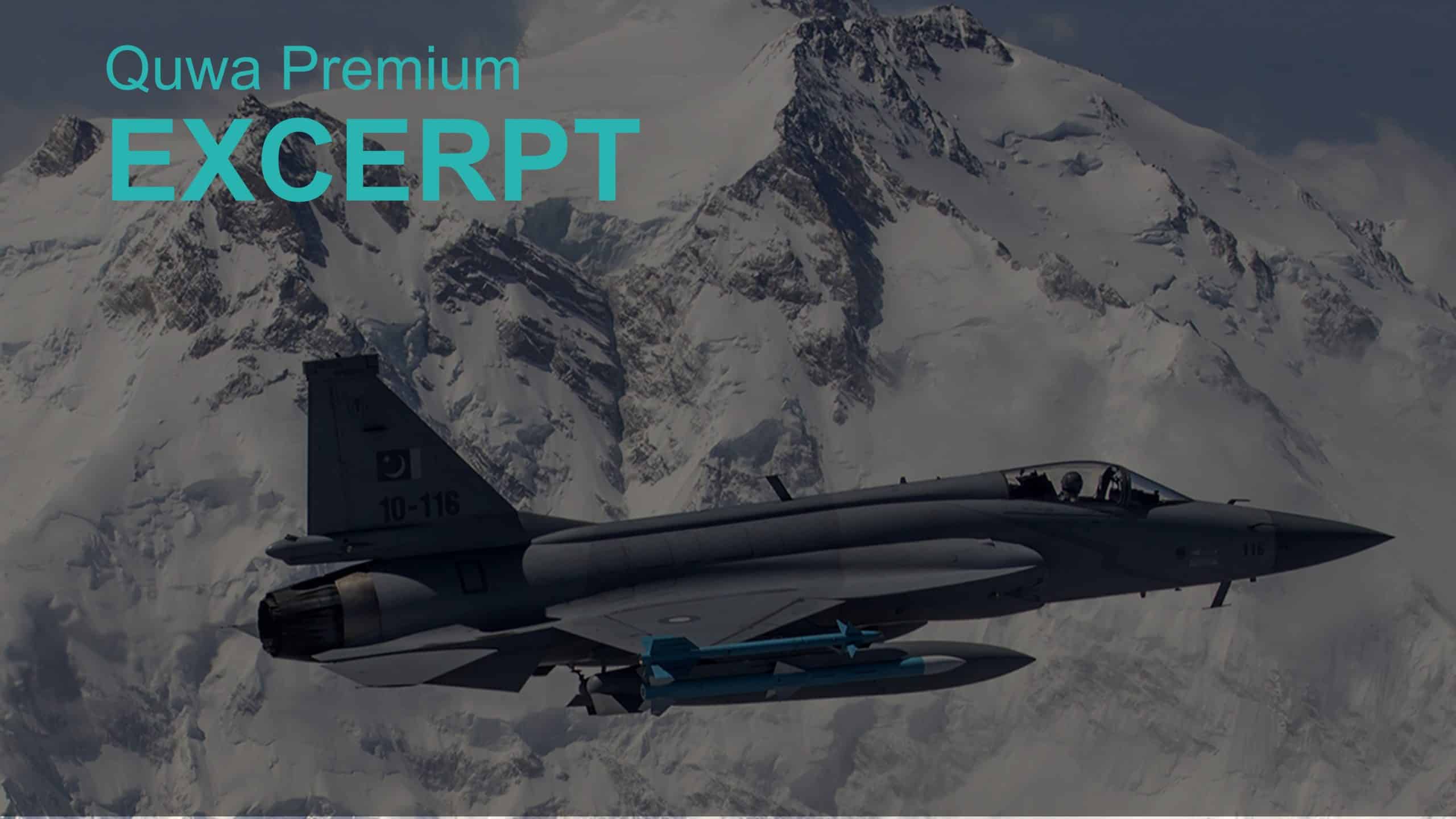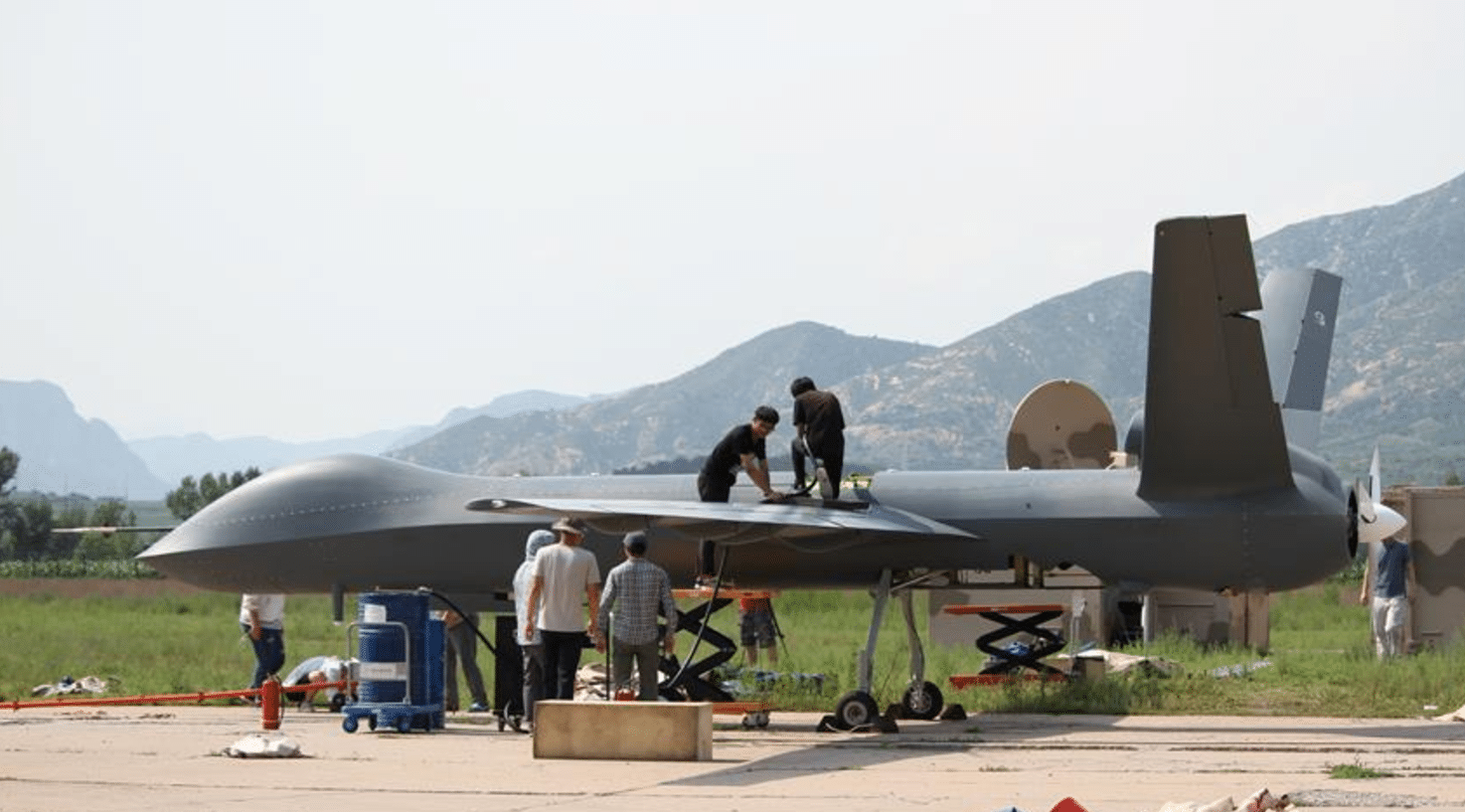4321Views 14Comments

Ideas about the JF-17 Block-III’s AESA radar
The provision of an active electronically-scanned array (AESA) radar is arguably the most significant system to be in place for the JF-17 Block-III, the forthcoming variant of the Thunder. We had already given a few thoughts about the JF-17 Block-III’s other subsystems – the helmet mounted display and sight (HMD/S) system, infrared search and track (IRST), and high off-boresight (HOBS) air-to-air missile (AAM).
These are all important systems, but there is a fundamental difference between them and an AESA radar; the AESA radar actually requires substantial integration work within the airframe. There is nothing to stop Pakistan Aeronautical Complex (PAC) from equipping the current JF-17 Block-I/II airframe with HMD/S, IRST and HOBS AAM. There is nothing inherent in any of these systems that require substantial changes to the airframe, even the IRST can be integrated as a podded solution.
On the other hand, an AESA radar, especially one that performs in terms of range and tracking, is heavy and it requires room for cooling and power (for its hundreds of transmit/receive modules or TRM). While we had earlier noted that the JF-17 Block-III’s airframe will not change as substantially as the Gripen E/F is to the Gripen C/D, it will still – by virtue of including an AESA radar – have some structural changes. How that takes shape has not officially been confirmed to the public.
Furthermore, the process will take time, and it is likely that the vendor will be involved in the process to some extent. This is an important point, but it will be discussed towards of the end of the article as it relates to the Pakistan Air Force (PAF)’s AESA radar options.
What does an AESA radar bring to the JF-17 Thunder? If anything, an AESA radar should bring substantial improvements in the JF-17’s electronic counter-countermeasures (ECCM) capabilities. In practical terms, this means the JF-17 would be more resistant to enemy electronic warfare (EW) jamming, which would come from digital radio frequency memory (DRFM)-based pods and integrated electronic countermeasure (ECM) suites. This is crucial. DRFM enables EW/ECM suites to record incoming enemy radar frequencies, and in turn, re-transmit them in an attempt to confuse the enemy radar.
Modern pulse-Doppler radars – such as the KLJ-7V2 on the JF-17 – transmit at one frequency with each pulse (but the radar will transmit a different frequency with each pulse, in an attempt to mitigate jamming). An AESA radar’s multiple TRMs can each transmit at different frequencies within a single pulse. Granted, a solid pulse-Doppler radar design could do well against enemy jamming attempts, especially if it comes from one or two sources (e.g. fighter aircraft); but if stuck in a dense EW environment that could include stand-off jamming aircraft, an AESA radar could provide assured protection.
Besides jamming, AESA radars also possess low-probability of intercept rates against enemy radar warning receivers (RWR). To what extent it impacts RWR in a real air warfare scenario is unclear, but any additional gap in an enemy’s ability to spot your aircraft is an important gain.
Overall, an AESA radar would be a pivotal gain, and in-exchange, it will be comparatively more expensive, not just in terms of funds, but time as well. Returning to an earlier point in this piece, i.e. the need for some structural changes to accommodate for the added weight and cooling systems. There is going to be a wait time in terms of incorporating the changes and running through the requisite tests. But with the F-16 route not looking good (see here for a full insight), the PAF may looking to streamline the process. In other words, the development work on the JF-17 could coincide with the selection of the vendor that will supply the AESA radar. All things considered, China is the most natural partner.
We had noted that Leonardo (formerly known as Finmeccanica) is an option on numerous occasions (here), and it may very well be, but it does not seem like they will be relied upon for the JF-17 Block-III. It is not just a matter of fitting a new radar, but actually adjusting the airframe to handle a new kind of radar. It would be more efficient to push the work to a single source, and when one has a vendor that can do airframe and radar work, why not take that route? Whatever added benefits the Leonardo Raven or Vixen has, are the costs of a more complex integration route worth it?
Little is known at this point, but the fact that the JF-17 Block-III will incorporate an AESA radar alongside HMD/S, HOBS AAM and potentially IRST cannot be understated. There is nothing to take away from the fact that the F-16 is a superb medium-weight design, but when looking at it from the lens of Pakistan’s reality, i.e. a situation where the best upgrades are withheld (due to cost and/or denial), the less appraised JF-17 Block-III emerges as the new qualitative driver.



14 Comments
by gizmo
do you plan to join Pakistan Air Force as a conslutant….. im sure they are aggressively brain storming ideas about how to move forward on future choices that have to be made by PAF….. you should concider it 🙂 and keep up the good work
by WARRIOR
I think PAC will select chinies equipment on block 3
How can Italy compete with China?
Chinies investment on this sector is almost equal to USA
by srmklive
I like to believe that Block-III is gonna be totally different in terms of design & avionics. Since majority of mirages & F-7 are gonna be retired around 2020, PAF needs to have a really strong fighter jet to take over the duties of Mirages. I dont think PAF will go half-baked on this.We shall be a full AESA, HMD-S & IRST integration into Block-III.
by Shershahsuri
Alongside AESA radar, IRST, HOBS AAM and HUD, increase in range, payload, design and a powerful engine with at least Mach 2 speed is necessary. Mr.Jigsaww comments requested.
by Zaff Hundal
The PAC did mentioned a while back that they are going to use composite materials for the Block 3 to make it a 4+++ gen fighter plane and I should guess the PAC will modify the airframe to incorporate AESA radar plus EW and IRST etc in the frame itself.
by sufi
i do not have a technical background so allow me to ask question from a layman’s perspective’
a) since AESA requires a lot of power how is that going to be arranged ?
b) since jf 17 has a small air frame how are you going to create space for AESA along with multiple other pods?
by Slick
As mentioned in the article structural changes will need to be made when implementing an AESA & I was hoping to see more use of composite materials along with these structural changes needed for the AESA in the block 3. I think this is the ideal time to look at increasing composite use. With substantial composite use PAC & CAC can help increase the range & possibly payload/ additional hard point incorporation which in turn will help to broaden the operational capabilities of JF17.
by Abdul Rashid
Hi Sufi,
I’m not expert on military tech either so to avoid a situation of blinding leading the blind, I will quote you some details from an older Quwa article and comment by Bilal Khan. This might shed some light on your two queries:
a) Since AESA requires a lot of power how is that going to be arranged?
“One of the general challenges with AESA radars is the impact these radars can have on weight and power consumption in the fighter. If the PAF intends to include AESA radars with the intention of maintaining or even improving the radar detection and engagement range of the Block-2, it will need a lighter airframe and more powerful engine”.
– See more at: http://quwa.org/2015/10/17/jf-17-block-2-and-block-3-details-confirmed/#sthash.EevUgw7S.dpuf
b) Since jf 17 has a small air frame how are you going to create space for AESA along with multiple other pods?
“Block III will get a new nose job to get AESA”.
—————————————————————————————————————–
Not comprehensive answers to your questions but I hope it has helped.
by kash
keeping weight down is gonna be the most difficult part….Gripen and F-16 gained 1200kgs and 1400kgs repectively while going from C to E…both had to get significantly more powerful engines…JF-17 doesnt have that luxury since development of RD 33 (first flown in 70’s) and WS 13 has been painfully slow…all indicartors are pointing towards a derivative of ASEA radar used in J 10b…which is rumoured to have impressive 1200 T/R modules in the bigger nose of j10b
by Salman Khan
Hi,
Chinese equipment are actually considered lower in quality than their Western counterparts. Although the performance is generally kept hidden, it is easy to speculate that Chinese technology must be inferior, as every different piece of their technology has been derived from old Western technologies which they reverse engineered. Original research actually brings more profit. And their indigenous work is always painfully slow, for example their work on jet engines.
by Salman Khan
Remember the reports that appeared some time ago that NAV technology company in China which makes avionics parts for the PAC Kamra, had offered a AESA radar similar to Elbit 2052 radar which is to be fitted on to LCA?
Ok, when the air marshals over at the PAF say that the work on the AESA radar is ongoing, and that they are satisfied with the pace of development, and since there is no work actually started or acknowledged by any Western avionics makers, are they referring to this ” ongoing work” as the Chinese radar held by NAV? Is this radar possibly a copy of Elbit 2052? So does this all mean that JF-17 would be fitted with this radar?
by Slick
Yes that is the worry wrt weight. As you said PAC do not have the luxury of choosing a proven more powerful power plant yet. So it becomes even more important to look at other options to help with weight management. Composites is the other solution that comes to mind and this is technology that is more readily available. CFTs is another avenue that can be explored further akin to the UAE F16 block 60.
by jigsaww
HI,
Thanks.
I didn’t quite understand the correlation between the article heading and content but i guess everything you mentioned is on the cards in block 3 or at least that is the ambition at the end of the day, as signalled by PAF time and again. Last year PAF chief, if i recall correctly, did state that PAF has reached important milestones with regards to JF-17 block 3. I put forward the idea a while ago that if newer F-16s are not going to be released or existing upgraded, JF-17 block 3 is poised to take the role of spearhead for PAF with F-16s going into support role ultimately. I think we just might be able to see that coming true now.
Still, the understanding is true. Integration will pose issues with cooling and power requirements, but it won’t require major updates in the airframe itself. Gripen NG is living example of that. We just might see 800 to 1000 TR modules AESA fitted for JF-17 since that about the optimal size for this size of plane. What i do think is that they will need to add more composites to reduce the weight and signature of the aircraft and use that weight loss for new goodies. So composites will be pretty crucial to JF-17 block 3.
There’s another point. If PAF goes for a western AESA then 1) the cost will substantially increase 2) PAC just might still have to do integration of a second Chinese AESA for low cost/certain customers.
Could it mean they just might find it better to go with Chinese AESA from start?
I think we’ll just have to wait for the egg to hatch.
by Hindukush
Atleast JF17 is moving forward compared to the project across the border which promised you the moon and delivered a dud